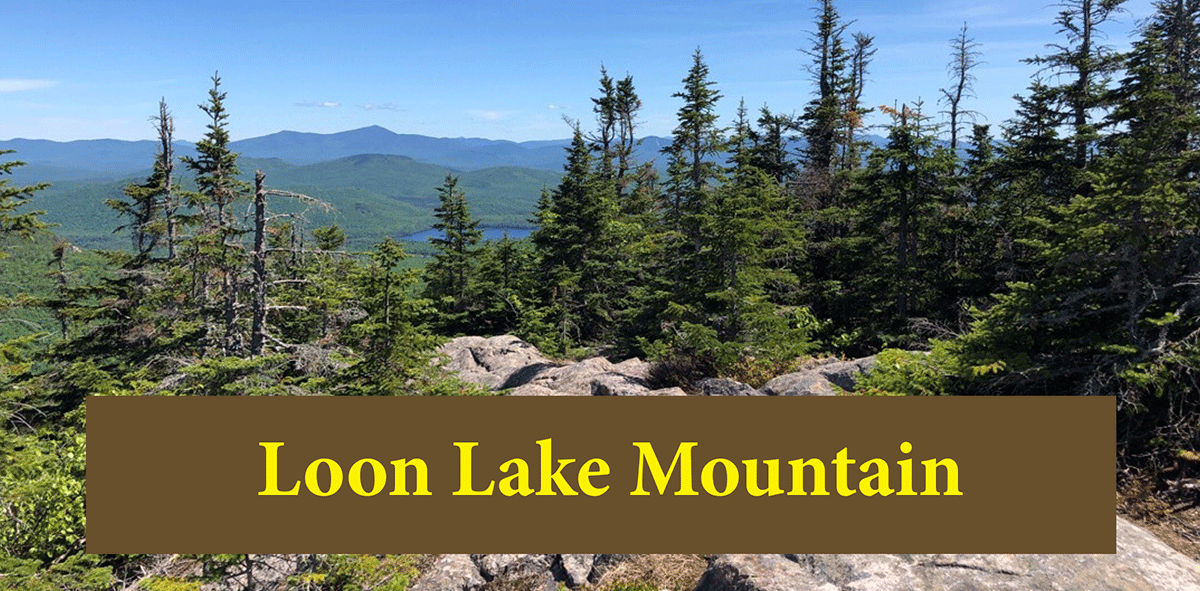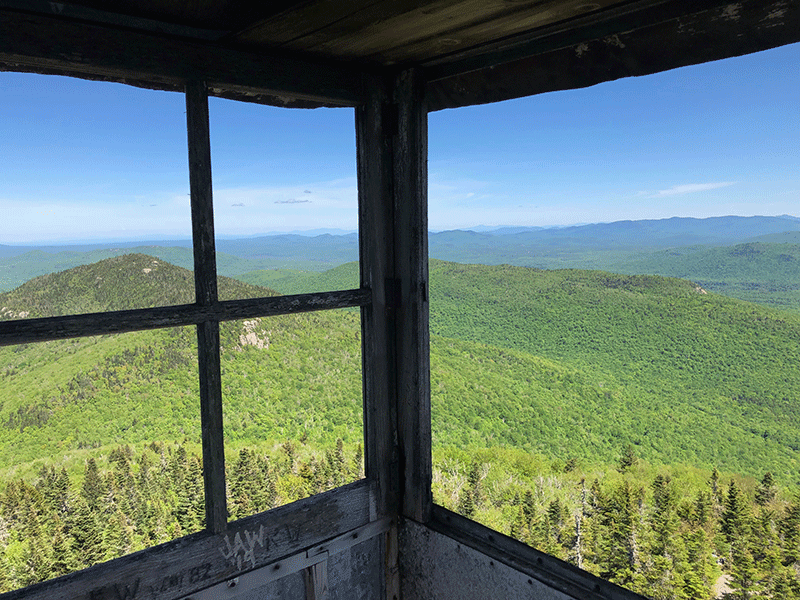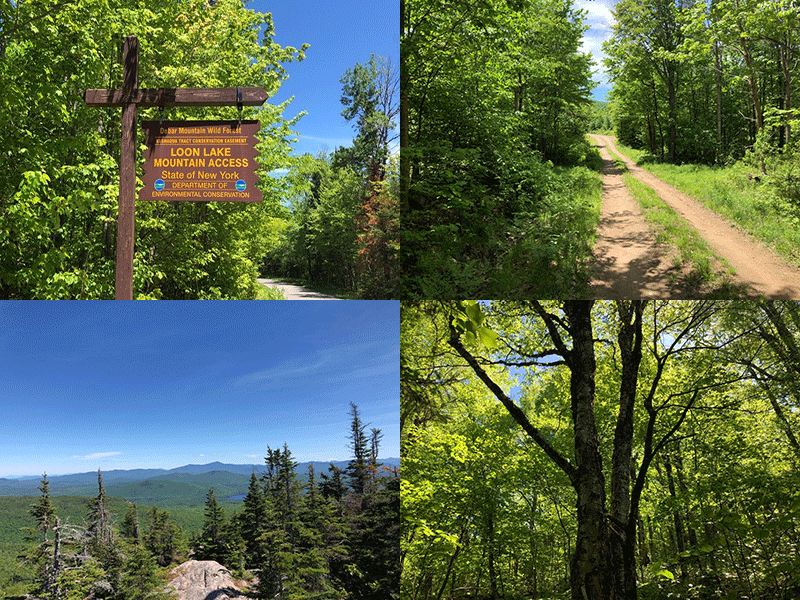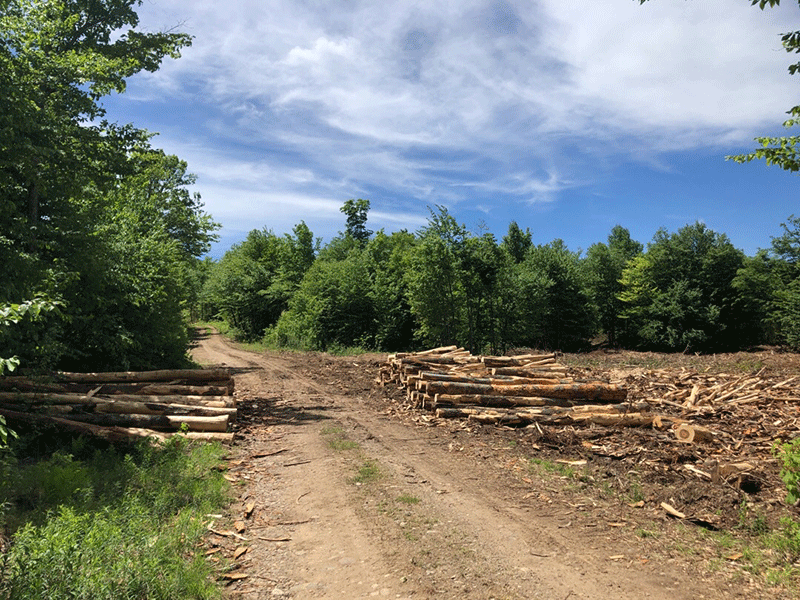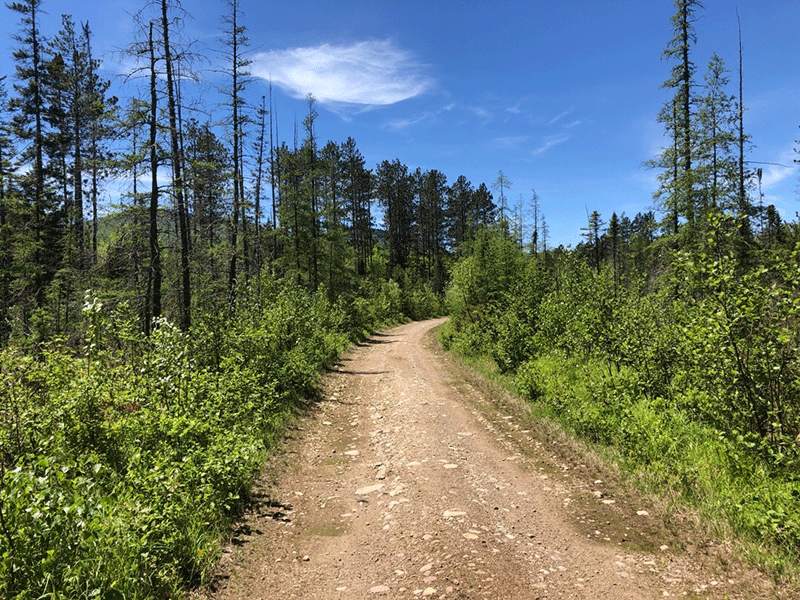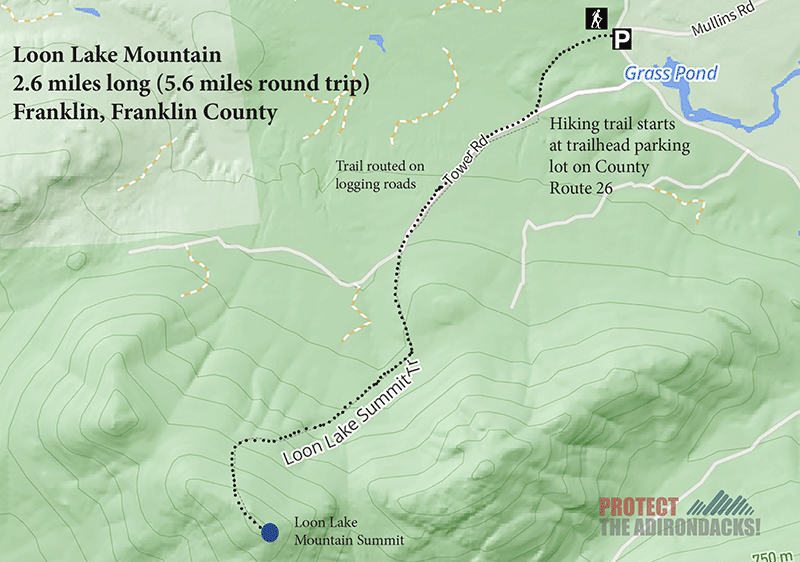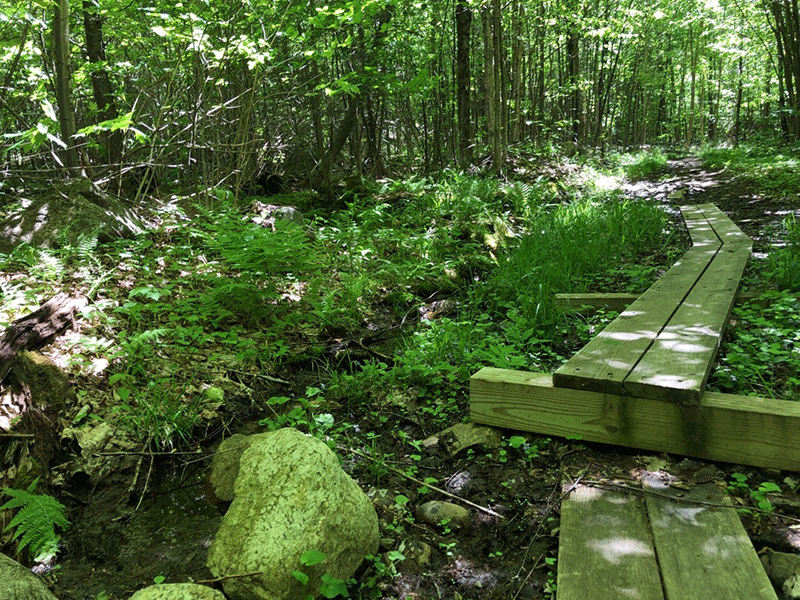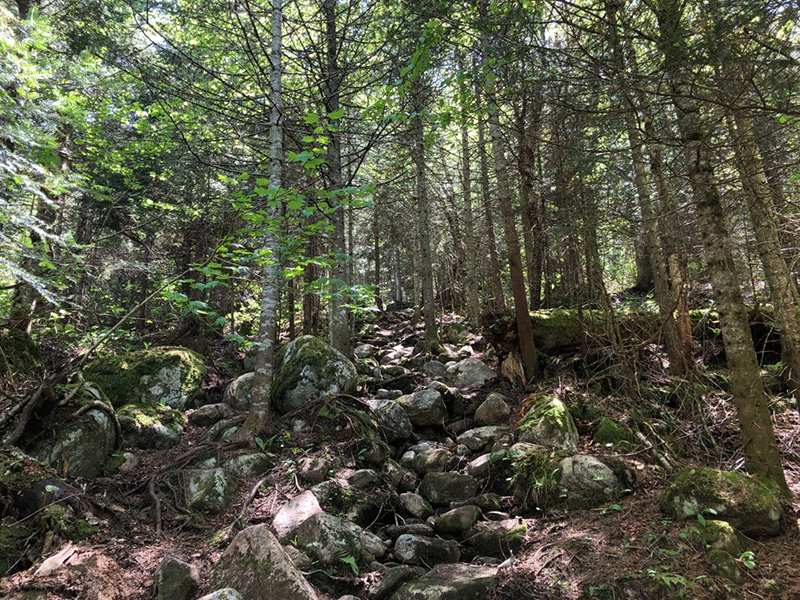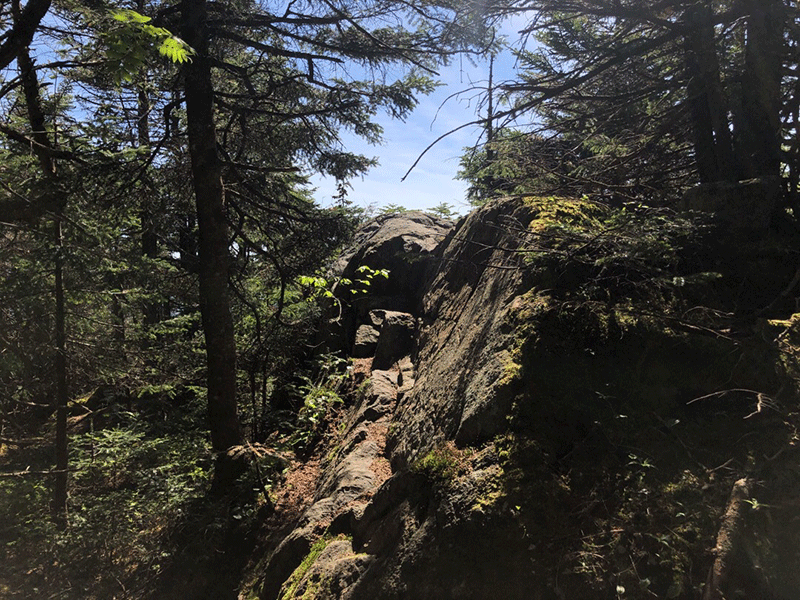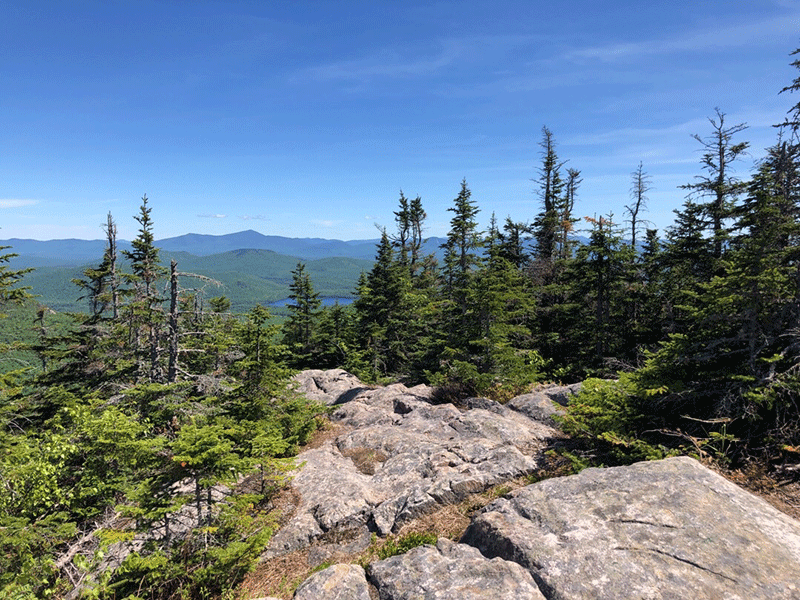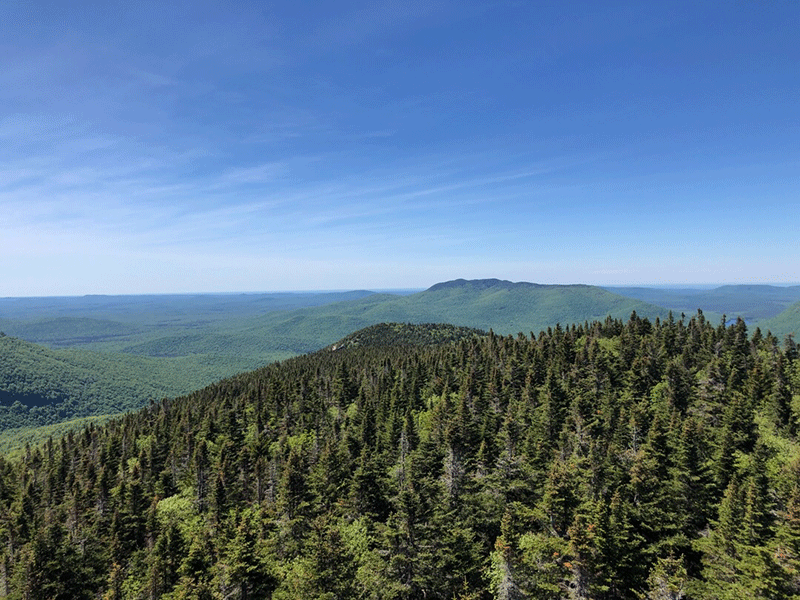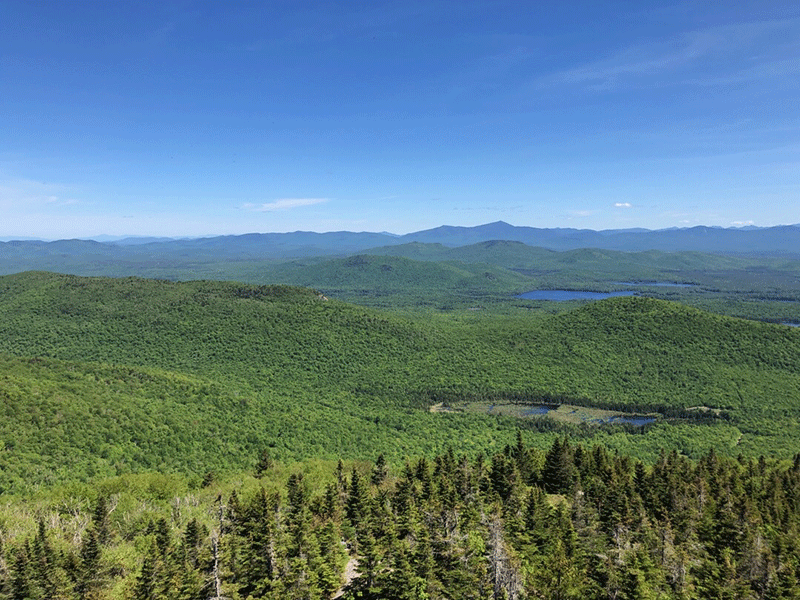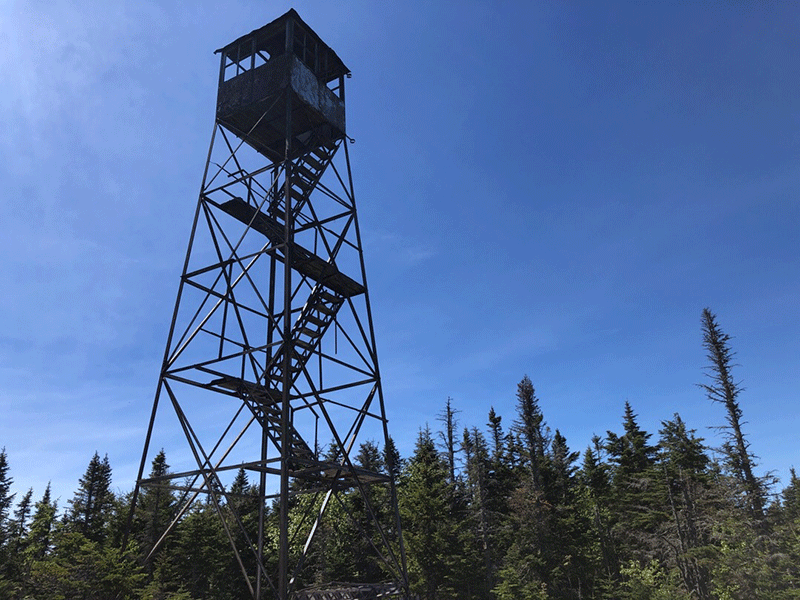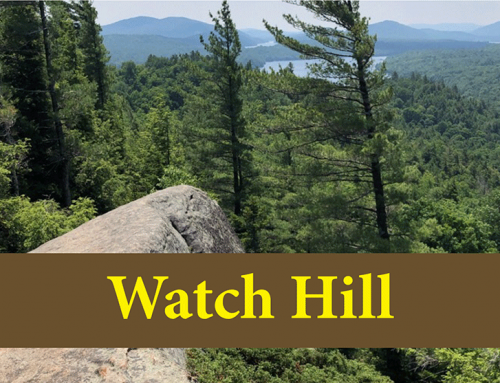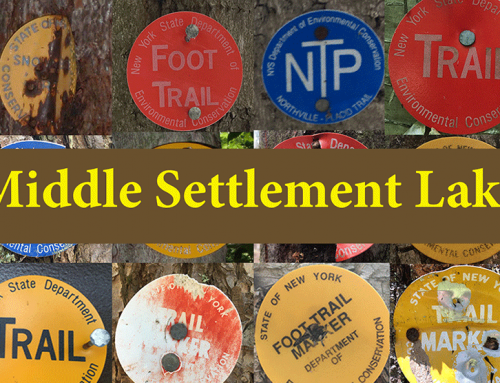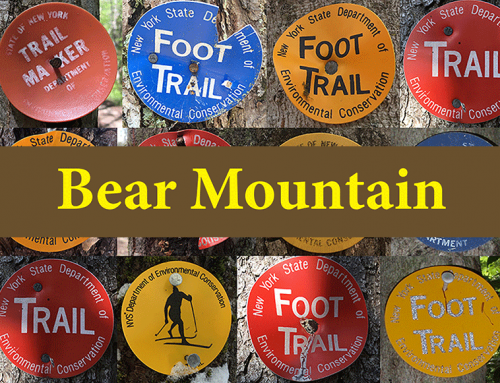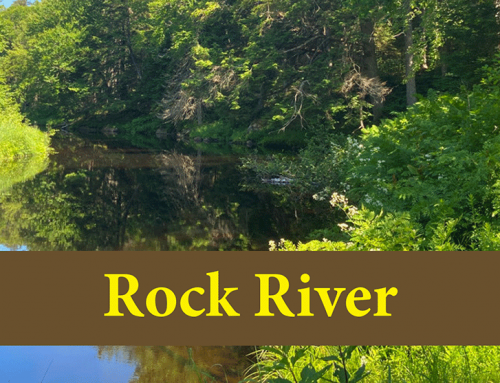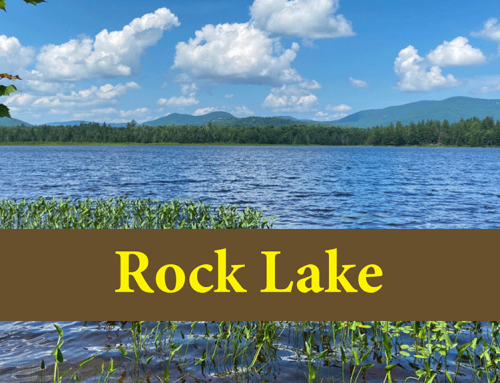Loon Lake Mountain is a moderate hike to an open, rocky summit with a firetower that provides great views of the Northern Adirondacks
Loon Lake Mountain
2.8 miles (5.6 miles round trip)
Franklin, Franklin County
Northern Adirondacks
Hiking, Snowshoeing
The Hike Up Loon Lake Mountain
Loon Lake Mountain offers a unique hiking experience in Franklin County, just shy of 6 miles round trip. The trail winds through portions of Adirondack Forest Preserve in the Debar Mountain Wild Forest and also extends into Kushaqua Conservation Easement lands. The parking area is located along Port Kent-Hopkinton Turnpike (Franklin County Route 26) off Route 30, north of Paul Smith’s. The hike starts on dirt logging roads before turning onto a foot trail, crosses three streams, and ends with a rocky scramble to the mountain’s historic firetower on the summit.
The trail starts by squeezing between the boulders on the edge of the parking lot and passing through the woods briefly toward the trail register. Turn right onto the first stretch of dirt road. Despite being an active logging road, the track is peaceful, and the surrounding lands diverse with forests and open wetlands with towering white pines that provide a glimpse of Loon Lake Mountain summit in the distance.
Immediately after the end of the wetland, turn left onto a dirt trail through a hardwood forest, before reemerging onto another logging road. Hikers should follow yellow trail markers to the right as the road climbs steadily toward the base of the mountain through clearcut forest areas and recently heavily logged lands covered with many small young trees. This portion of trail is especially poorly marked, so hikers should be on the lookout for the yellow markers on their left that direct the hiking trail back into the forest.
As the trail ascends gradually, notice how the surrounding area has slowly rebounded from logging as it transitions into a mid-succession forest. Boardwalks help hikers traverse wetlands. The trail grows wide in spots at this section.
The trail then meanders as it crosses over three wooden bridges spanning small charming streams. After the third bridge, the trail becomes significantly steeper and rockier on the last half mile of the ascent. This final stretch of the hike requires the most care as hikers step from rock to root, but it is among the most beautiful as the trail is lined with a variety of conifers growing out of mossy rocks. The trail finally evens out for a length and passes a side path to a scenic overlook on the right, before breaking onto the summit.
The Summit of Loon Lake Mountain
The view from the top of Loon Lake Mountain is impressive. After a solid hike, the view of wetlands in nearby valleys, distant mountains on the horizon, including some High Peaks, and Loon Lake is a big reward. The rocky summit provides many options for sitting, resting, and enjoying the views, while offering different perspectives on the forest around the mountain. Built in 1928, the skeletal 35-foot firetower stands tall on the summit in disrepair and unclimbable because the first set of wooden steps has been removed.
The hike down is the reverse of the hike up, but it’s steep and rocky near the top so exercise caution. This is a beautiful hike, accessible for anyone who is comfortable with and able to walk the full 5.6 miles round trip.
Click here to download a map and trail directions for Loon Lake Mountain
When You Hike Make Sure to Practice “Leave No Trace” to be Prepared and Protect the Forest Preserve
Please follow “carry in, carry out” rules for all trash and follow other Leave No Trace principles when hiking in the public Forest Preserve and other wild areas. The seven Leave No Trace principles are: 1) Plan ahead and prepare ; 2) Stay on hiking trails and camp at designated areas; 3) Dispose of human waste and trash properly; 4) Leave what you find; 5) Minimize campfires; 6) Respect wildlife; 7) Respect other hikers.
Educated hikers do not damage the environment. Prepared hikers do not need search and rescue unless injured.
Winter Use: Loon Lake Mountain is used for snowshoeing in the winter.
Click here to become a member of Protect the Adirondacks.

